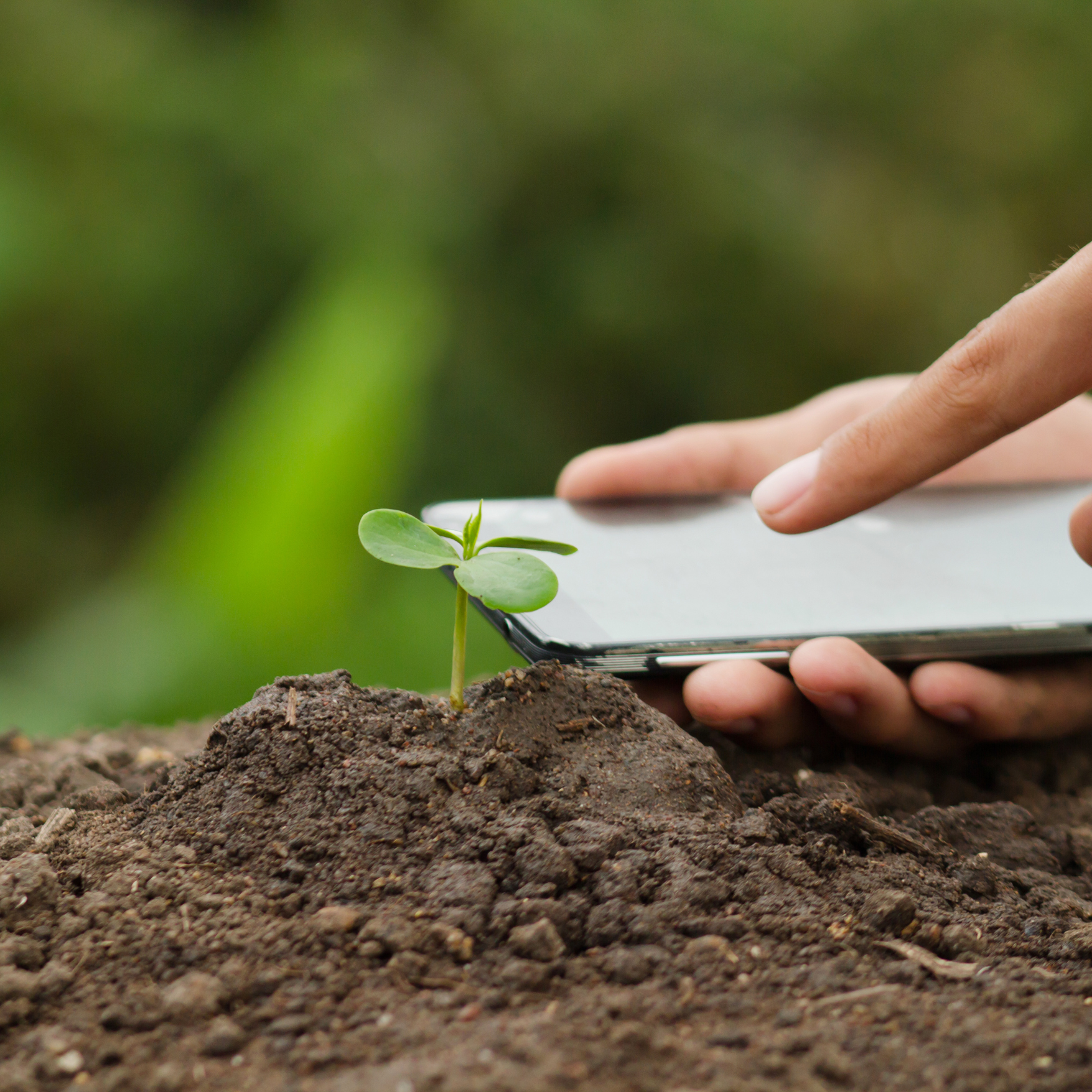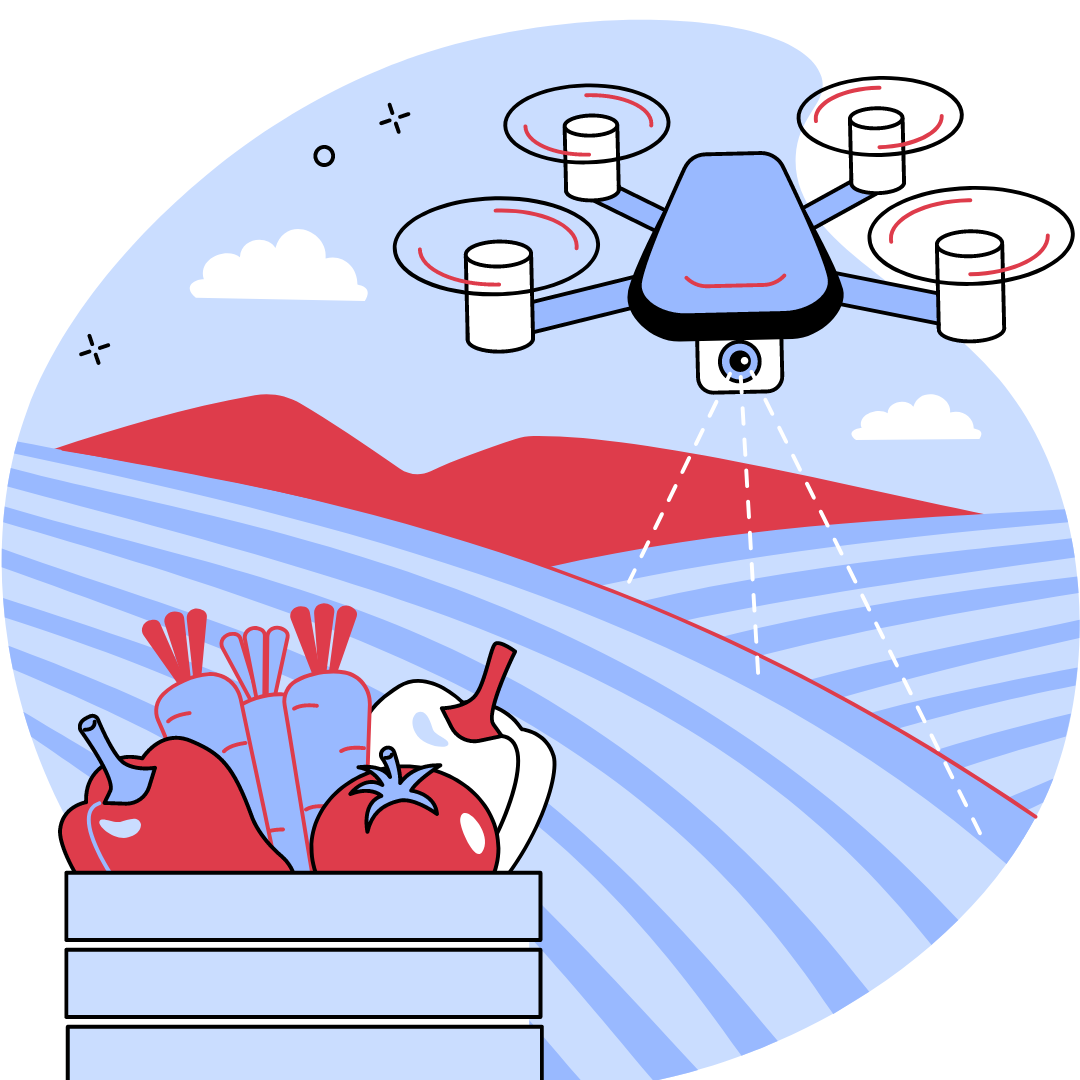New-Age Agriculture Processes
The Agri value chain is complex and demanding, as it spans from planting to harvesting, processing and finally reaching the consumer. For this process to be successful, great visibility is necessary; the ability to respond quickly and effectively change conditions during the cycle, along with operational efficiencies and use of cutting-edge technologies are all essential components.
Technology is becoming more and more important in managing the Agri value chain effectively and efficiently. The value chain’s participants are changing quickly, and improving the management of the agribusiness ecosystem through more efficient farming and transparent food supply chains have enormous promise. In order to become flexible and effective digital organizations, agribusinesses are utilizing cutting-edge technical developments, such as IoT, automation, wireless, AI, and ML.


STARENT ADVANTAGE
Maximize Farming with Technology
Intelligent Crop Breeding
In addition to increasing accuracy and precision, new mechanization, automation, precision, and high-throughput phenotyping techniques have the ability to reduce the cost of evaluating variety attributes and genotype-environment-management interactions.
Also, the wealth of variation in crop and animal types has been accessible for research thanks to quicker, less expensive genotyping and sequencing services. When used appropriately, these services have the potential to speed up the development of new kinds.
AI reduces processing and identification times for data, which is a significant advantage. Breeders and technical advisors develop their self-assurance and responsiveness, enabling them to take action when it is most necessary. Starent leverages AI technology, such as high-throughput genomics and phenomics to advance breeding and speed up the process of creating new plant types.
Crop Management
Integrated crop management (ICM) is a comprehensive strategy for environmentally friendly farming. To determine the most appropriate and secure course of action for long-term gain, it takes into account the circumstances across the entire farm, including socioeconomic and environmental elements. ICM is a farming technique that strikes a balance between the needs of running a successful business and responsibility and environmental awareness. It covers methods for avoiding waste, improving energy efficiency, and reducing pollution.
Crop upkeep during growth and development, crop harvest, crop storage, and crop distribution all are within the scope of STARENT crop management. With the help of our Integrated Crop Management System, farming may be done in a way that protects the environment. In addition, it acknowledges that in order to maintain the overall stability of agriculture, it is crucial to maintain the quality, quantity, and price of produce as well as the profitability of the farm and the adoption of new technology.
Agronomy Implementation
Agronomy is a science that examines agriculture from a comprehensive, integrated viewpoint. In agronomy, it’s critical to comprehend the characteristics of the soil and how the soil interacts with the crop in growth, as well as the nutrients (fertilizers) that the crop requires and when and how to apply them. It’s also crucial to comprehend how crops grow and develop, how the climate and other environmental factors affect crops at all stages, and the most effective ways to control weeds, insects, fungi, and other crop pests.
Our objective is to find and create for crops conditions that will increase production and profitability while preserving natural resources and the environment. Our integrated technology gives farmers the tools they need to control crop and disease inputs and apply scientific crop planning based on soil and weather conditions.
Precision agriculture (GIS/mapping, IoT integrations)
Some farm jobs are now automated as a result of advancements in robotics, GPS, unmanned aerial vehicles, sensors on satellites, farm equipment, and fields. Automated field operations must include precision agriculture in general and geographic information systems (GIS) in particular.
To categorize the processes that happen and make wise judgments, precision farming requires spatial data, including an analysis of spatial variability, and simulation models. GIS is a system that uses a variety of technologies to store, analyze, and display spatial data in order to enhance farm management and operations.
Farmers can regulate soil quality from the top layers down the roots thanks to STARENT’s use of contemporary technology like satellite images, field mapping, and IoT solutions. Farmers may reduce waste, increase crop yields, analyze historical trends, and make better long-term crop management decisions with the support of detailed soil quality data.
Related Services
Digital Transformation Services for Agriculture


